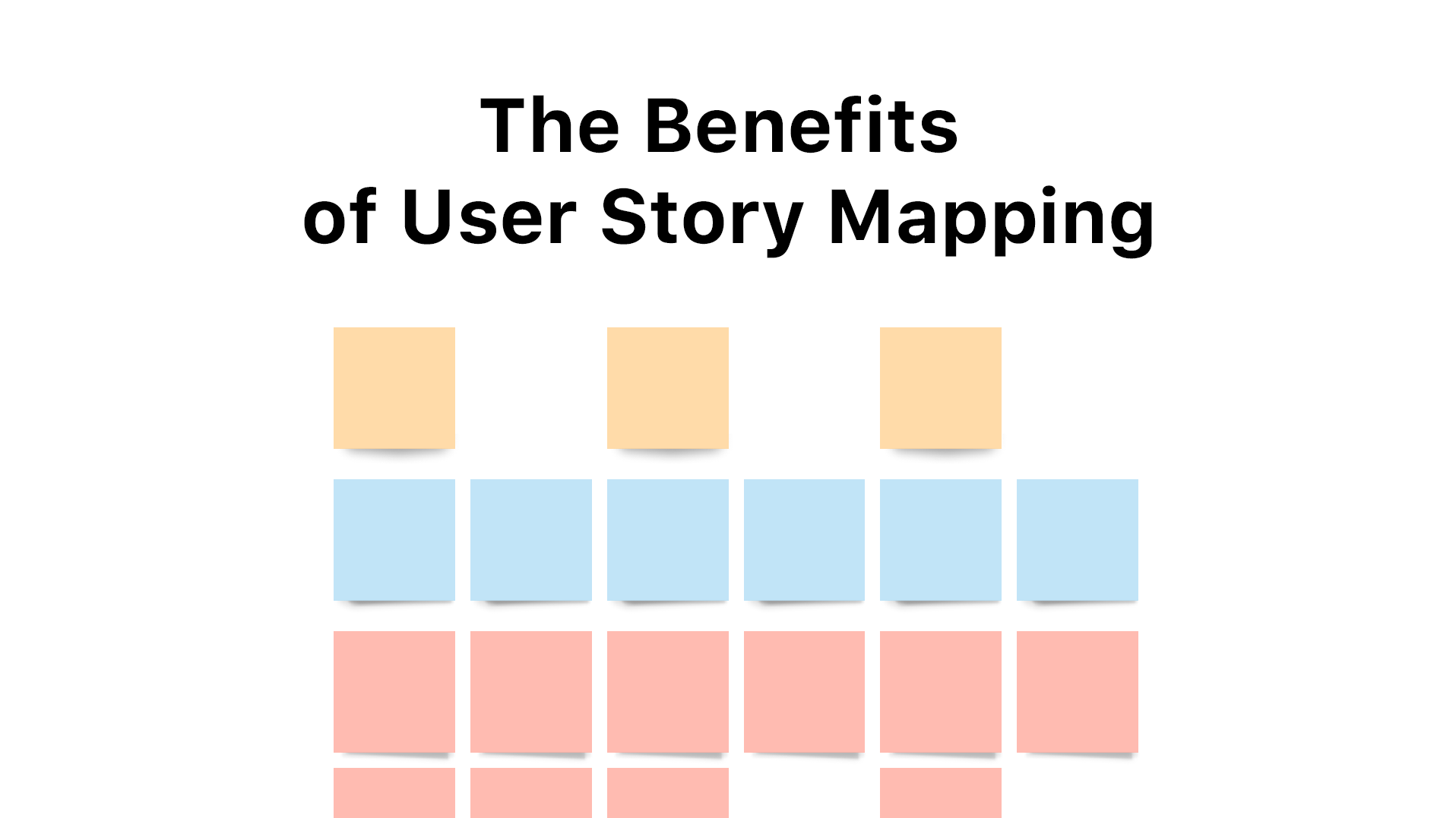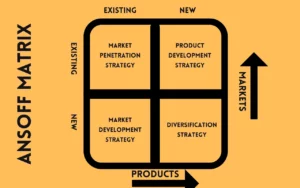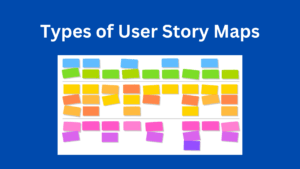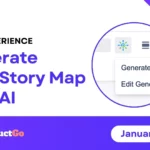Table of Contents
What is User Story Mapping?
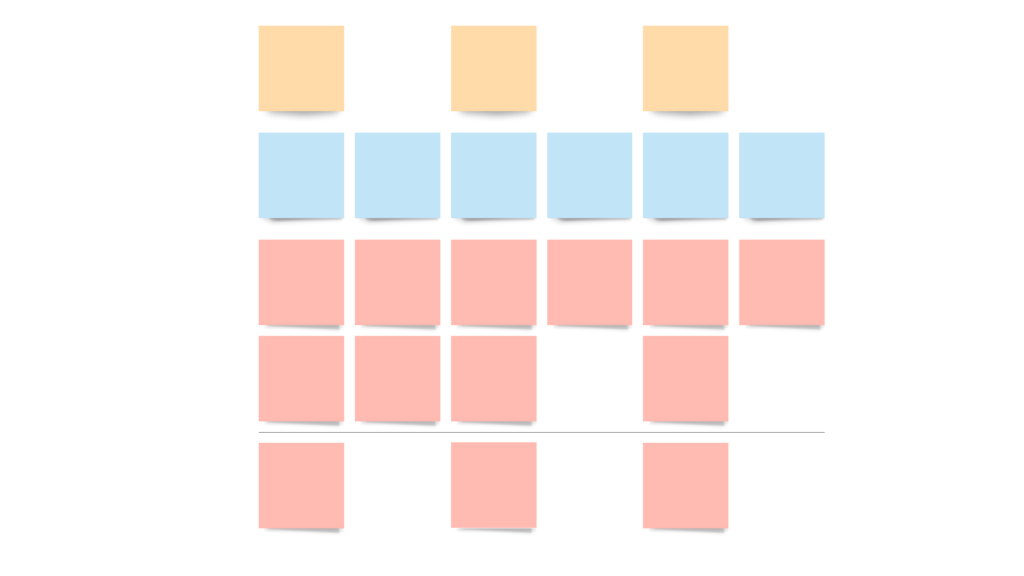
The Benefits of User Story Mapping
A user story mapping is a visualization tool used in agile software development to help teams understand and prioritize user needs. It provides a visual representation of the product backlog and helps teams see the big picture of the product they are building. The user story mapping is typically organized as a horizontal timeline, with user stories arranged along the timeline in a logical order. The map may also include additional information, such as user personas, use cases, and feature descriptions, to help teams understand the context of the user stories. The purpose of user story mapping is to help teams prioritize their work based on the user’s needs and to ensure that the product meets the user’s expectations. By using user story mapping, teams can improve product understanding, increase collaboration, enhance user focus, and better communicate the product vision and progress.
Click here to read more: What is User Story Mapping? – User Story Map for Jira
What are the Benefits of User Story Mapping?
The benefits of user story mapping are many and can have a significant impact on the development process.
Improved collaboration and communication: One of the key benefits of user story mapping is that it provides a shared understanding of the product and its features among all stakeholders. This helps to reduce the risk of misunderstandings and ensures that everyone is working towards a common goal. Teams can use user story mapping to get a better understanding of each other’s perspectives and to work together to resolve any disagreements or roadblocks.
Increased clarity and understanding: User story mapping provides a visual representation of the product and its features, making it easier for everyone to understand the structure and priority of the product backlog items. Teams can use user story mapping to understand the big picture and to see how individual product backlog items fit into the overall development effort.
Better alignment with stakeholder goals: User story mapping allows teams to prioritize product backlog items based on their alignment with the goals and priorities of the stakeholders. This helps to ensure that the development effort is focused on delivering the most value to the stakeholders, rather than simply delivering the most features. Teams can use user story mapping to understand the priorities of stakeholders and to make informed decisions about what to build and when.
Faster decision-making: With a shared understanding of the product structure and priority, decision-making becomes faster and more efficient. Teams can quickly identify and resolve any roadblocks, ensuring that development efforts are not delayed. User story mapping helps teams to make informed decisions about what to build and when reducing the risk of over-engineering or missing critical features.
Improved prioritization: User story mapping helps teams to prioritize their product backlog items, making it easier to focus on the most important work and avoid scope creep. Teams can use user story mapping to understand which features are most important to the stakeholders and to prioritize the product backlog items accordingly.
Better visibility into development progress: User story mapping provides a clear picture of the progress of development and the status of individual product backlog items. This helps teams to track their progress and ensure that the development process stays on track. Teams can use user story mapping to monitor the status of individual product backlog items and to identify any potential roadblocks or dependencies that could impact the development process.
Facilitation of iterative development: User story mapping enables teams to iteratively develop their product, making it easier to incorporate feedback and make improvements as needed. Teams can use user story mapping to understand the feedback from stakeholders and to make changes to the product backlog as needed.
Enhanced user engagement and satisfaction: By involving users in the development process, user story mapping helps to ensure that the product meets their needs and enhances their satisfaction with the end result. Teams can use user story mapping to understand the needs of users and to prioritize the product backlog items accordingly.
How to use User Story Mapping in Jira?
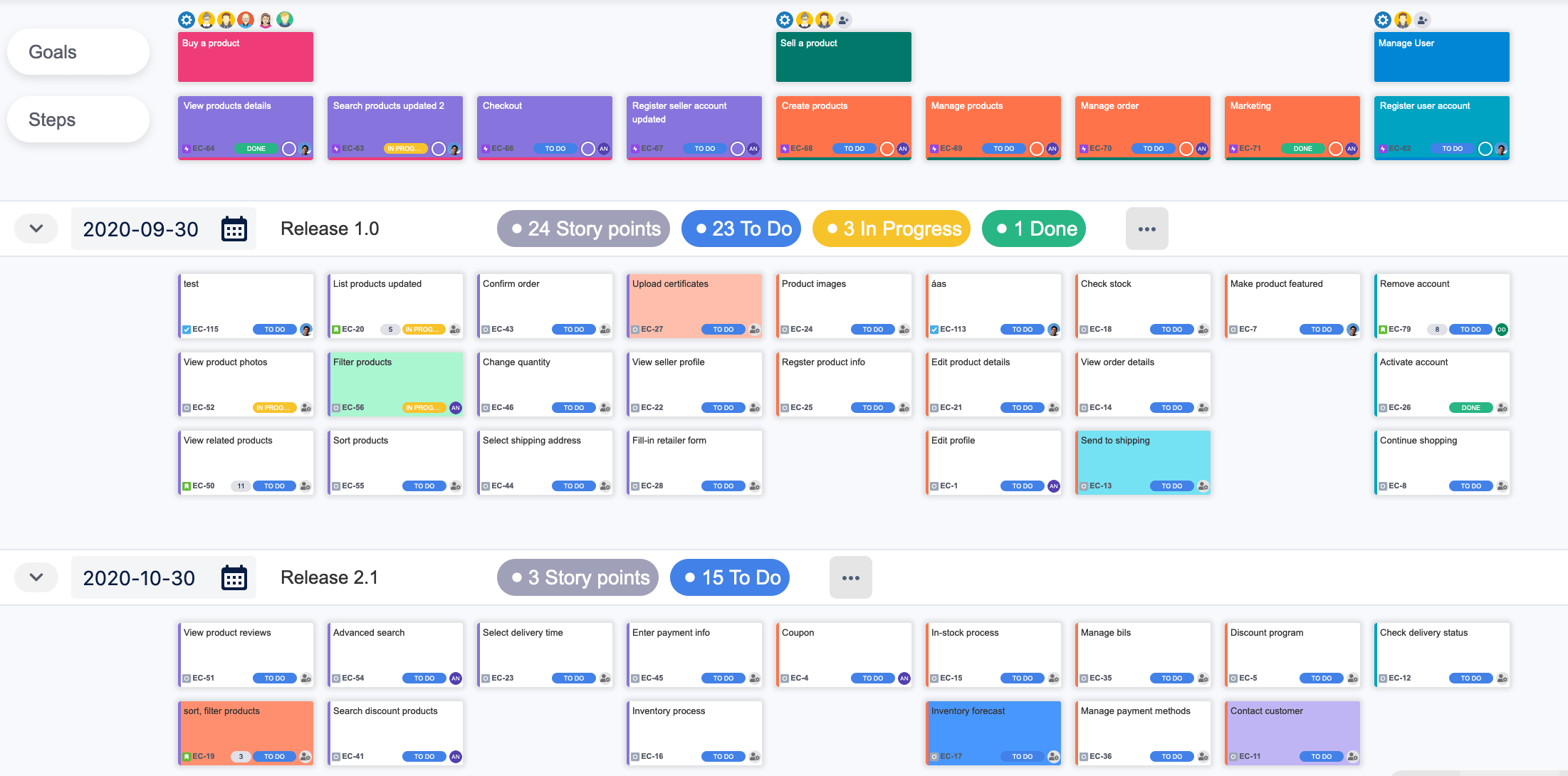
The Benefits of User Story Mapping
Agile User Story Maps, Roadmaps & Persona for Jira is made to help companies and teams with user analysis, managing product backlogs, and keeping track of your projects is simplified with its unique functionalities for Portfolios, Projects, and Agile Boards, along with visual models from the users perspective.
Keep your eye on the big picture by planning by release or sprint.
Plan your projects with your team and view them in a story map or road map view.
Rework your structures by dragging and dropping them to organize them. Facilitate product discovery, and prioritize tasks.
Create User Personas and user journeys that help your team be customer-focused
Click to learn more & install: Agile User Story Maps, Roadmaps & Persona for Jira
Conclusion
Using a user story map has numerous benefits for software development. It provides a clear and visual representation of user needs and priorities, promotes collaboration and communication between teams, aligns development efforts with the product vision, facilitates prioritization and backlog management, and offers increased visibility into the development process. These benefits ultimately lead to more effective and efficient product development, better user satisfaction, and a higher likelihood of delivering a successful product.

